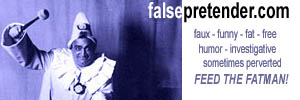Considerable Sounds: Hipgnosis- Exquisite Album Art

 One of the great losses to music fans as we go to smaller and more compact mediums is the album art which developed to such a high degree with LP releases. The packaging of LPs, one could argue, became an integral part in the overall experience of the listener. Today I'd like to spotlight one of the best design teams in this field. Hipgnosis. All the art on display here was created by this design team.
One of the great losses to music fans as we go to smaller and more compact mediums is the album art which developed to such a high degree with LP releases. The packaging of LPs, one could argue, became an integral part in the overall experience of the listener. Today I'd like to spotlight one of the best design teams in this field. Hipgnosis. All the art on display here was created by this design team.

 Hipgnosis, the British design team consisted primarily of Storm Thorgerson, Aubrey Powell, and later, Peter Christopherson. The group dissolved in 1983, but Thorgerson still works on CD designs. Their style was lavish, relying on photographic techniques and darkroom magic. Their 1st commisioned work was the cover of Pink Floyd's "Saucer Full Of Secrets". Being film and art school students, they were able to use the darkroom at the Royal College of Art, but when they completed their education, they had to set up their own facilities.
Hipgnosis, the British design team consisted primarily of Storm Thorgerson, Aubrey Powell, and later, Peter Christopherson. The group dissolved in 1983, but Thorgerson still works on CD designs. Their style was lavish, relying on photographic techniques and darkroom magic. Their 1st commisioned work was the cover of Pink Floyd's "Saucer Full Of Secrets". Being film and art school students, they were able to use the darkroom at the Royal College of Art, but when they completed their education, they had to set up their own facilities. They built a small darkroom in Aubry Powell's bathroom, but shortly thereafter, in early 1970, rented space and built a studio. Remarkably, many of the memorable covers of the era were done in the bathroom darkroom.
They built a small darkroom in Aubry Powell's bathroom, but shortly thereafter, in early 1970, rented space and built a studio. Remarkably, many of the memorable covers of the era were done in the bathroom darkroom. Hipgnosis' unique approach to designing album packages pioneered many innovative visual and packaging techniques. In particular, they elaborately manipulated surreal photos (utilizing darkroom tricks, airbrush retouching, and mechanical cut-and-paste techniques). this was perhaps the film-based harbinger of what would, much later, be known as photoshopping.
Hipgnosis' unique approach to designing album packages pioneered many innovative visual and packaging techniques. In particular, they elaborately manipulated surreal photos (utilizing darkroom tricks, airbrush retouching, and mechanical cut-and-paste techniques). this was perhaps the film-based harbinger of what would, much later, be known as photoshopping.
 Many of their album photos told "stories" derived from lyrics to songs on the album, often based on puns or double meanings of words in the album title. Powell and Thorgerson were film students and they would often employ models as "actors" staging their photographs in a highly theatrical manner.
Many of their album photos told "stories" derived from lyrics to songs on the album, often based on puns or double meanings of words in the album title. Powell and Thorgerson were film students and they would often employ models as "actors" staging their photographs in a highly theatrical manner.
Seldom did band members actually appear on the covers, but 10cc made it to the cover on a few occaisions.



The logos on Hipgnosis artworks are actually pen and ink artworks in their own right. Most were done by celebrated graphic artist George Hardie.

How About This One... From XTC?
 Hipgnosis used primarily Hasselblad medium format cameras for their art. The square film format was well suited to album cover imagery.
Hipgnosis used primarily Hasselblad medium format cameras for their art. The square film format was well suited to album cover imagery.
O great creator of being grant us one more hour to perform our art and perfect our lives.
-Jim Morrison
Duly Consider and Considerable Sounds are TM of this publication and are subject to liabilities thereof






















No comments:
Post a Comment